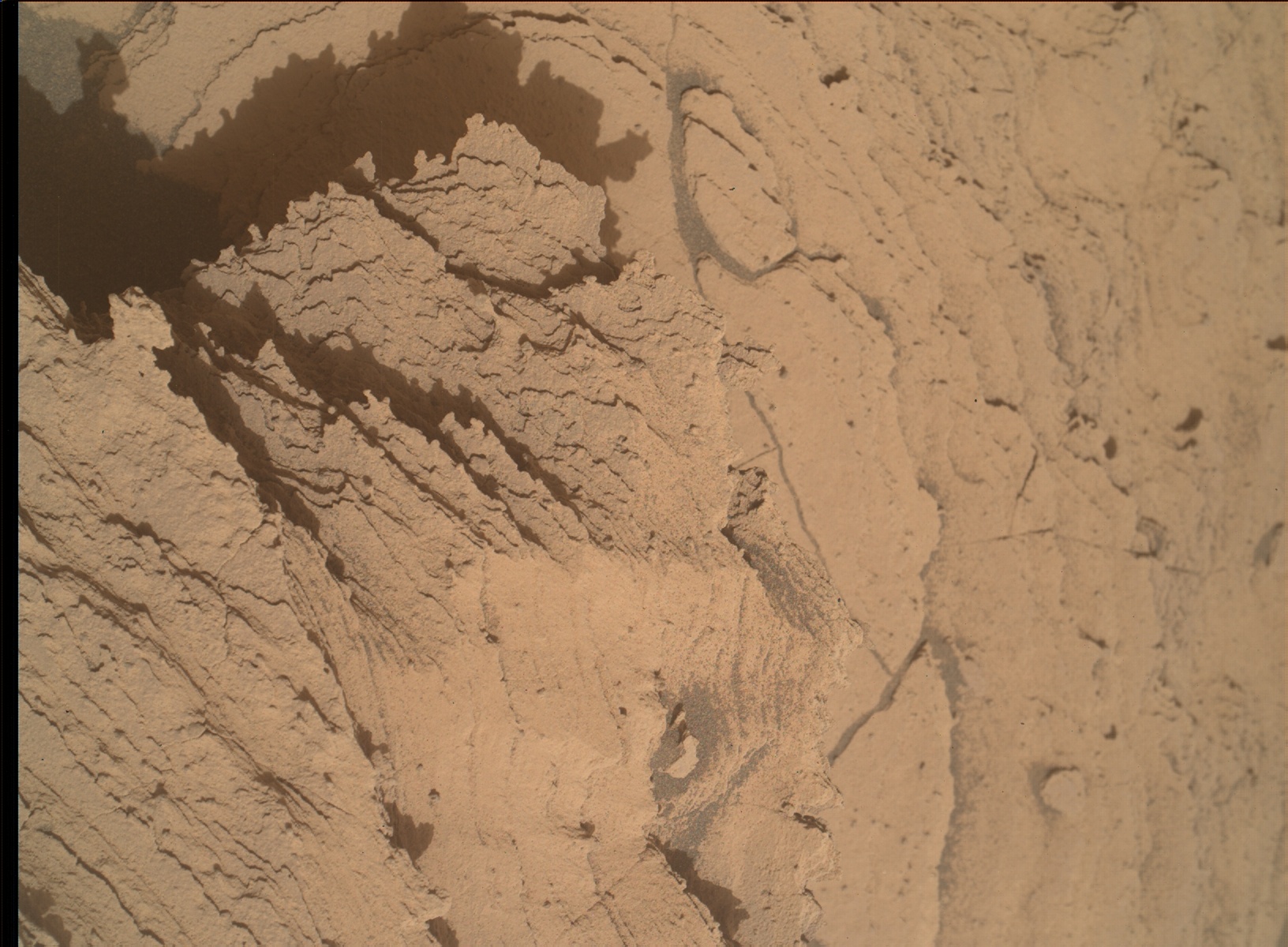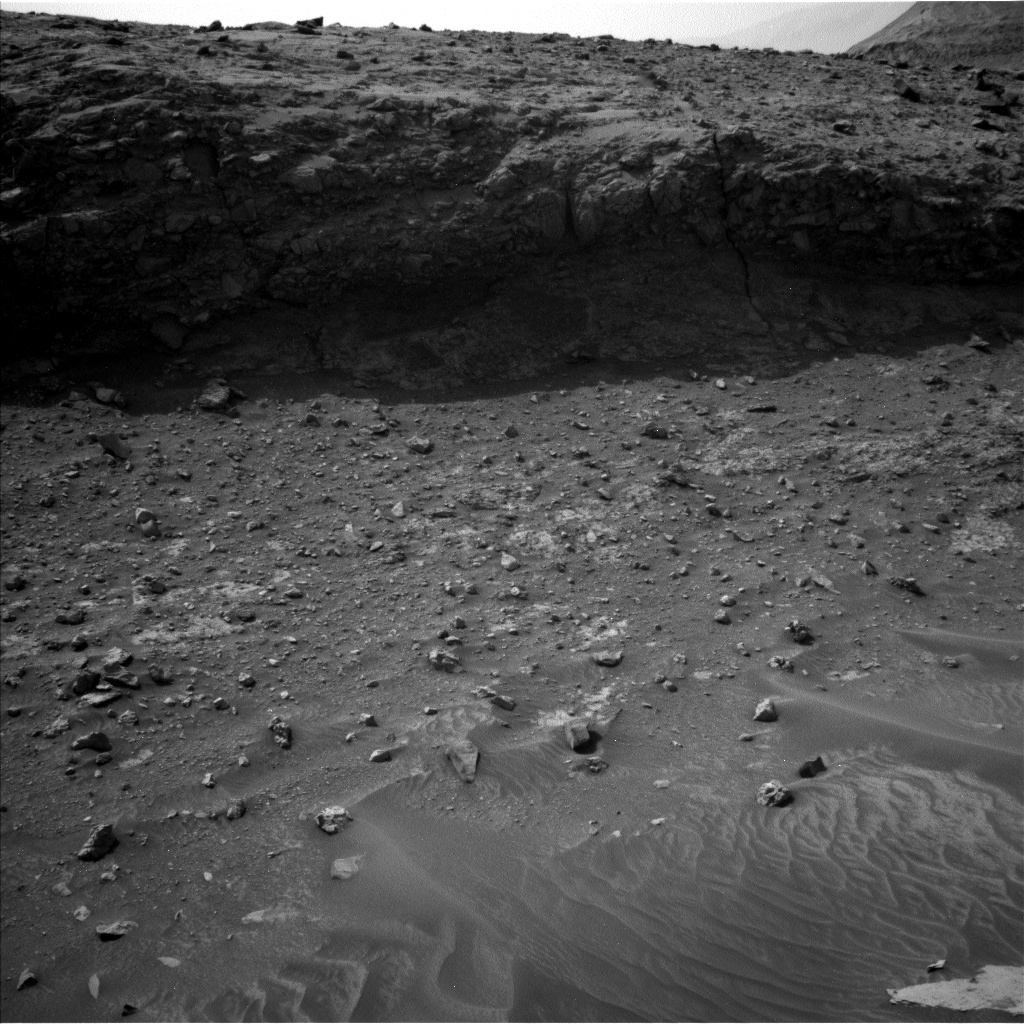3 min read

Earth planning date: Wednesday, June 14, 2023
It appears that Curiosity’s recent traverse has turned a new leaf as this is the second successful drive after lots of slipping and sliding. The new workspace is full of goodies for us to target and fill our 2-sol plan with, in addition to new perspectives of features off in the distance. The rover passed the “Slip Risk Assessment Process” (SRAP) which means we can unstow the arm and use its instruments. With lots of science time available, I think many of us planning today felt like a kid in a candy shop… or shall I say, “A geologist in a rock shop?”
On the first sol of the plan, Mastcam will document "Pisori," a large fractured rock, to get a closer look at the fresher surfaces. Additionally, Mastcam will capture some laminated rocks in “Petacas.” Given the change in route, we won't be able to drive past the crater cluster as soon as we'd hoped, so the team also prioritized a large mosaic to capture one of the pits in all its glory from our current position. The drive placed Curiosity right in front of “Macapa,” a lumpy float rock that APXS and MAHLI will analyze in attempt to derive its origin and document texture, respectively. ChemCam will assess the composition of a laminated bedrock target called “Chiribiquete” with Laser Induced Breakdown Spectroscopy (LIBS) and capture a long-distance mosaic of the crater rim with its Remote Microscopic Imager (RMI).
Flatter rocks not only give Curiosity an easier time on the road, but also provide scientists with plenty of options for a “Dust-Removal Tool” (DRT) target. However, we wanted to avoid prominent nodules to maximize dust-removal and assess the bedrock composition. The team settled on “Rio Madeira” as our DRT target to assess bedrock composition with APXS on sol 3859 and a Mastcam multispectral observation on sol 3860. MAHLI will also take a closer look at the textures of Rio Madeira.
One of the first things I noticed in the workspace were the intriguing protruding veins along the edges of some of the blocks. Luckily, the team decided on a target that I selected called “Njam.” Curiosity will assess Njam with ChemCam LIBS on sol 3560 to illuminate the processes surrounding the formation of these features. ChemCam will also acquire a long-distance RMI on a possible exposed stratigraphic layer in the distance. Lastly, Mastcam will acquire a small mosaic that covers the DRT and surrounding targets.
`Twas a fun day of planning with few obstacles- let’s hope Curiosity’s next drive of 30 meters has a similar outcome!
Written by Alivia Eng, Graduate student at Western Washington University







